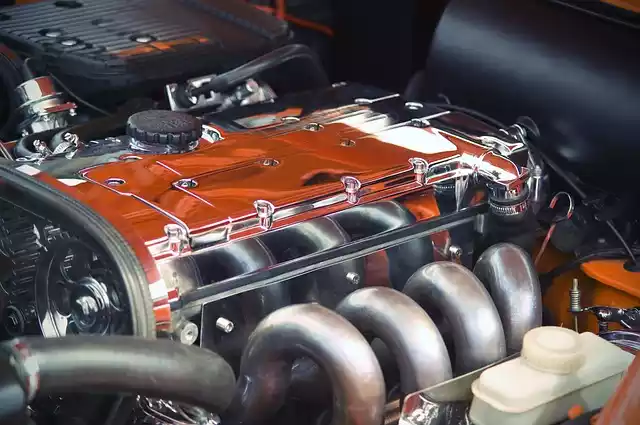Car insurance can often seem like navigating a complex labyrinth of terms and acronyms, leaving many policyholders bewildered about the coverage they truly have. Among the jargon that floats around in the insurance realm, one term that frequently crops up is “EP.” A question that comes to our mind, what is EP in car insurance?
What exactly does EP mean in car insurance, and why is it crucial for every driver to comprehend? In this comprehensive guide, we will unravel the mystery surrounding EP, shedding light on its significance, implications, and how it influences your overall car insurance policy.
What is EP in car insurance?
EP in car insurance stands for Engine Protection. It is an add-on cover that can be purchased with a comprehensive car insurance policy. EP cover provides financial protection against the cost of repairing or replacing the engine of your car in the event of damage due to water ingression, lubricant oil leakage, or hydraulic lock.
What is covered by EP cover?
EP cover typically covers the following:
- Internal Engine Damage:
- EP cover typically includes protection against internal engine damage, such as damage to the pistons, crankshaft, cylinder, and other internal components.
- Water Ingress:
- One of the common causes of engine damage is water ingress. EP cover can safeguard your engine in case it’s exposed to water, whether due to floods or other water-related incidents.
- Hydrostatic Lock:
- EP cover often extends to cover damages caused by a hydrostatic lock, which occurs when the engine stalls due to water entering the combustion chamber.
- Oil Leakage:
- Engine protection also takes care of damages resulting from oil leakage, ensuring that your engine remains in optimal condition.
- Gearbox Damage:
- In some cases, EP cover may also provide protection against damages to the gearbox, an integral part of your vehicle’s drivetrain.
What is not covered by EP cover?
EP cover typically does not cover the following:
- Damage to the engine caused by an accident or collision
- Damage to the engine caused by wear and tear
- Damage to the engine caused by negligence or willful misconduct
- Damage to the engine caused by modifications that have not been approved by the car manufacturer
Importance of EP in Car Insurance:
- Tailored Coverage: EPs empower policyholders to tailor their coverage to match their unique circumstances. This flexibility ensures that you are not paying for coverage you don’t need while still addressing specific risks that are relevant to your situation.
- Comprehensive Protection: By understanding and utilizing EPs, drivers can enhance their overall protection. This is especially crucial in scenarios where standard policies may fall short, leaving individuals vulnerable to unexpected expenses.
- Cost-Effective Solutions: Rather than investing in a more expensive policy with broad coverage, EPs allow drivers to choose cost-effective solutions that precisely meet their requirements. This can be particularly advantageous for budget-conscious individuals seeking maximum value from their insurance investment.
Why should you buy EP cover?
The engine is one of the most expensive components of a car. If the engine is damaged, it can be very costly to repair or replace. EP cover can help to protect you from these costs.
EP cover is especially important if you live in a flood-prone area or if you often drive on rough roads. It is also important if you have an older car, as the engine is more likely to develop problems with age.
How to Add EP Cover to Your Policy?

Adding Engine Protection (EP) Cover to your existing car insurance policy is a straightforward process. Contact your insurance provider, inquire about EP cover options, and discuss your specific needs. The cost of EP cover is generally reasonable compared to the potential expenses associated with engine repairs.
Here, we will walk you through the process of adding EP cover to your car insurance policy, ensuring that your engine remains safeguarded on the road.
Step 1: Assess Your Insurance Needs
Before delving into the world of Engine Protection (EP) Cover, take a moment to assess your insurance needs. Consider factors such as your driving habits, the environment in which you drive, and any specific concerns you may have regarding potential engine damage. This self-assessment will help you determine the extent of coverage you require.
Step 2: Contact Your Insurance Provider
Once you have a clear understanding of your insurance needs, the next step is to get in touch with your insurance provider. This can be done through a phone call to your agent or customer service, or through the online portal provided by your insurance company. Inform them of your interest in adding Engine Protection (EP) Cover to your policy.
Step 3: Inquire About EP Cover Options
During your conversation with your insurance provider, inquire about the specific Engine Protection (EP) Cover options available. Different insurance companies may offer varying levels of coverage, so it’s essential to understand the details of each option. Ask about the types of engine damage covered, any exclusions, and the cost associated with adding this coverage to your policy.
Step 4: Discuss Premium Adjustments
Adding Engine Protection (EP) Cover to your policy may result in a premium adjustment. Some insurance companies may offer this coverage as a standalone add-on, while others may include it in a comprehensive package. Discuss how the addition of EP cover will impact your premiums, and make sure you are comfortable with any changes in costs.
Step 5: Provide Necessary Information
To add Engine Protection (EP) Cover to your policy, your insurance provider may require specific information about your vehicle. This could include details about the make and model of your car, its age, and any modifications or customizations you have made. Ensure you provide accurate and up-to-date information to facilitate a smooth process.
Step 6: Review Policy Documents
Before finalizing the addition of Engine Protection (EP) Cover, carefully review the updated policy documents. Pay close attention to the terms and conditions, coverage limits, and any exclusions related to engine protection. Understanding the details of your coverage ensures that you are well-informed about the protection your policy provides.
Step 7: Confirm the Addition of EP Cover
Once you are satisfied with the terms and conditions, confirm the addition of Engine Protection (EP) Cover to your car insurance policy. Your insurance provider will then update your policy accordingly, reflecting the enhanced coverage for your vehicle’s engine.
Adding Engine Protection (EP) Cover to your car insurance policy is a proactive step towards ensuring the longevity and reliability of your vehicle’s engine. By following these simple and comprehensive steps, you can navigate the process seamlessly, providing yourself with the peace of mind that comes with knowing your engine is well-protected on the road. Take charge of your coverage and drive confidently into the future.
Best Car Insurance Companies in India in 2023
Here is a list of top 20 car insurance companies in India, with the number of network garages, and Incurred claim ratio of each insurer in detail:
| Car Insurance Company | Network Garages | Claim Settlement Ratio |
| Bajaj Allianz Car Insurance | 4000 | 98.5% |
| Chola MS Car Insurance | 4636 | 96% |
| Magma HDI | 4000 | 97.1% |
| Digit Car Insurance | Repair Anywhere | 96% |
| Future Generali Car Insurance | 3500 | 96.3% |
| HDFC ERGO Car Insurance | 8200 | 99% |
| IFFCO Tokio Car Insurance | 4300 | 95.8% |
| Kotak Mahindra Car Insurance | 2327 | 98% |
| Liberty Car Insurance | 4500 | 98% |
| National Car Insurance | 3100 | 93% |
| New India Assurance Car Insurance | 3000 | 90% |
| Oriental Car Insurance | 3100 | 94% |
| Raheja QBE Car Insurance | 1000 | 92% |
| Reliance Car Insurance | 8200 | 98% |
| Royal Sundaram Car Insurance | 3300 | 98.6% |
| SBI Car Insurance | 16000 | 100% |
| Shriram Car Insurance | 2000 | 96% |
| Tata AIG Car Insurance | 7500 | N/A |
| United India Car Insurance | 3100 | 95% |
| Universal Sompo Car Insurance | 3500 | 96% |
How much does EP cover cost?
The cost of EP cover will vary depending on your car’s make, model, and age. However, it is typically a relatively inexpensive add-on cover.
Here are some tips for choosing EP cover:
- Compare the terms and conditions of different EP cover policies before you buy.
- Make sure that the cover you choose provides the level of protection that you need.
- Check that the cover you choose is offered by a reputable insurance company.
EP cover can be a valuable addition to your comprehensive car insurance policy. It can help to protect you from the financial costs of engine damage.
How to claim under EP cover?
If your engine is damaged and you have EP cover, you should contact your insurance company as soon as possible. They will assess the damage and determine whether it is covered by your policy. If so, they will pay for the cost of repairing or replacing the engine.
End Note on What is EP in Car Insurance
Your car’s engine is the heart of your vehicle, and protecting it is crucial for a smooth and enjoyable driving experience. Engine Protection (EP) Cover in car insurance is the key to ensuring that your engine remains in optimal condition, guarding against unexpected and costly damages. Consider adding EP cover to your policy, and drive with confidence, knowing that the heartbeat of your ride is well protected.

